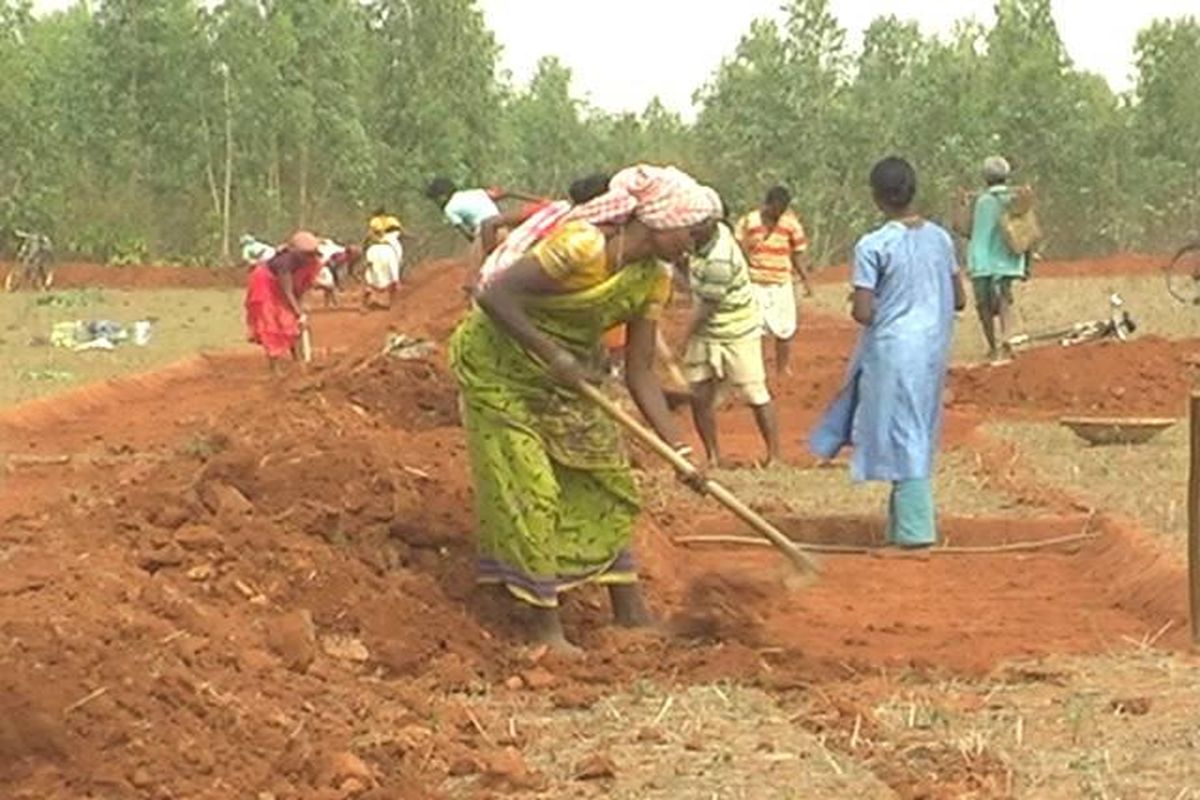After two years washed out by the Covid-19 pandemic, the world was looking forward to a ‘normal’ 2022 but a surging third wave of infections has dashed everyone’s hopes. Vaccination and herd immunity, touted as sure-fire antidotes have proved ineffective against the relentlessly mutating virus.
Having failed to rein in the pandemic, leaders and scientists, without much scientific evidence, are trying to reassure the public that vaccination would somehow ameliorate the effects of Covid-19, or that a third or fourth dose of the vaccine could boost a person’s immunity against Covid19.
Advertisement
The first two waves of Covid19 infections were extremely painful for us. Even before the first wave reached our shores, a strict lockdown was imposed; consequently, around 12 crore workers lost their livelihoods and economic activity collapsed. With no means of sustenance, millions of poor people trudged back to their villages, suffering many casualties on the way. The second wave was even more deadly; the health system floundered; many Covid-19 afflicted died for lack of hospital facilities. What does the new year portend for us?
Daily Coronavirus infections, that were around 10,000 for the last two months are now touching 1,50,000; an unchecked rise in Covid positivity rates along with visuals of crowded markets, beaches and temples threaten to unleash the third wave, sooner rather than later. How well prepared are we to face the third wave? The prognosis is not very encouraging. Despite a number of pious declarations, there has been no major improvement in public health facilities since last year; our hospitals may again fail to cope with the surge in Coronavirus infections, given the fact that 10 per cent of the persons in the US, infected by the current variant of Covid-19, required hospitalisation. Private hospitals are not designed to treat patients in bulk, so the burden would fall on Government hospitals, which remain infrastructurally challenged.
Even as the third wave is gaining momentum, it is not too late for the Government to fill-up vacancies of doctors, nurses and technicians and acquire badly-needed medical equipment and drugs. We can only pray to God that the horrendous scenes of death and despair of the second wave are not repeated. Education at all levels suffered in the pandemic. Classes had gone online but with poor smartphone and computer availability, most of the poorer students received no instruction during the pandemic. Surveys revealed that in two years of the pandemic, children had forgotten what they had learnt earlier and smaller children had lapsed into illiteracy.
Physical classes, that had resumed only recently, are again closing down. It seems that we would have to plan for continuing educational activities even if the pandemic goes on for several more years. Perhaps, the Government can provide a cheap computer tablet, available sub- $100, to all students who need it and employ educated unemployed as neighbourhood mentors to groups of two-three students, to make online learning a success. Manufacturing, trade and commerce came to a virtual standstill during the first wave with GDP falling by 7.3 per cent in FY 2020- 21.
Despite the depredations of the second wave, the economy has recovered substantially in FY 2021-22. However, even in the best-case scenario, we would only reach the level of 1 April 2020 on 1 April 2022. Needless to say, the dream of a $5 trillion economy has receded. With the third wave looming ominously, the Government should think of localised responses to different levels of infections. Total lockdowns can be avoided and businesses can be allowed to operate with reasonable restrictions. In this context, night curfews which are the first to be imposed when infections rise, should be done away with because there is no evidence that the coronavirus spreads only in the night.
Rather, most activities can be staggered so that large gatherings are avoided during daytime. Economic inequality has grown due to the asymmetric, Kshaped, post-Covid economic recovery. The organised sector (except tourism and hospitality) is back at pre-Covid levels; Nifty is at an all-time high, the manufacturing sector regained pre-Covid levels by the end of July 2021, income-tax collections for the first half of FY 2021-22 were 14.6 per cent higher than the collection of H1 of FY 2019-20 and GST collections are at record-breaking levels.
But, on the other hand, the unorganised sector that employs the majority of workers is floundering; the number of people seeking employment under MGNREGA has risen alarmingly, exhausting the entire budget for MGNREGA in 21 States in the first six months and forcing the Centre to run a negative balance of Rs 8,686 crores ~ even after work could not be provided to 13 per cent households. Unemployment and inflation are soaring, reducing the earnings of the poor. Paradoxically, the earnings of the uber rich are growing exponentially; India added 55 billionaires in 2020, and overall, India’s billionaires increased their combined wealth by 50 per cent.
The two richest persons in Asia now are Mukesh Ambani and Gautam Adani, with Mr Ambani breaking into the US$100 billion club. Small businesses are in distress. According to Confederation of Indian Industry (CII) data, India has about 63.4 million MSMEs, producing 33.4 per cent of manufacturing output, and employing about 120 million workers. A survey by All India Manufacturers’ Organisation found that more than a third of MSMEs and self-employed individuals had to shut shop after the first lockdown.
Post-pandemic recovery was impeded by soaring commodity costs and lack of demand. No one can feign ignorance of the catastrophic effect of last year’s elections and melas on Covid infections, yet, ignoring the threat of the looming third wave, the Government, the Election Commission and all political parties agreed to the holding of assembly elections in February-March 2022. The Election Commission justified its decision of holding elections by proposing restrictions on canvassing and election rallies but once election activities pick up, political parties are unlikely to respect any Lakshman Rekha. We can only hope that the ‘dance of democracy’ does not degenerate into a dance of death.
Another pernicious development, ahead of the elections are the Dharam Sansads and vituperative posts on social media, which are but thinly disguised attempts to polarise the electorate along religious lines. The fact that people in authority do not condemn such developments unambiguously and that the police treat the persons involved leniently, bodes ill for the secular character of our Republic. The border stand-off with China is yet to be resolved. Clearly, our oft-repeated ambition of becoming a Vishwa Guru has riled our much stronger neighbour, who is leaving no stone unturned to show us our place. The new Chinese border law, the renaming spree of Indian places is designed to legalise Chinese claims to Indian territory. It is difficult to challenge China militarily because it has much better infrastructure near the border and an overall superiority in arms.
Our hunger for cheap Chinese products has ensured that China remains our largest trading partner, foreclosing the option of retaliation by shutting our markets to China. Diplomatically, we have few options; our new friends, the Western powers have proved unreliable. Besides being heavily indebted to China, all neighbouring countries have issues with our internal policies. It does not help that the political leadership is in complete denial of the Chinese aggression. Before we lose more territory and face, we will have to sit down and seriously contemplate a comprehensive response to an expansionist China. The controversy around the Farming Acts turned the spotlight on the agricultural sector.
We have to remember that 15.18 crore persons or 40 per cent of our workforce is engaged in agriculture. Despite disturbances due to the pandemic and protests, agriculture was the only sector of the Indian economy that reported a growth (3.4 per cent) in FY 2020-21. Also, agricultural exports touched record levels in FY 2020-21, when exports of other commodities nosedived. The Government should not stand on prestige after the almost unanimous rejection of the Farming Acts by farmers, rather, showing magnanimity, the Government should come out with an alternative roadmap for agriculture because a resurgent agricultural sector can provide a decent livelihood to the bulk of our population and power our economic revival. To sum up: a number of unforeseen developments have disturbed the trajectory visualised by the Government at the beginning of its term; a mid-term appraisal and stock taking of the Government’s priorities and policies may be required to sync them with the changed circumstances.
(The writer is a retired Principal Chief Commissioner of Income-Tax)











